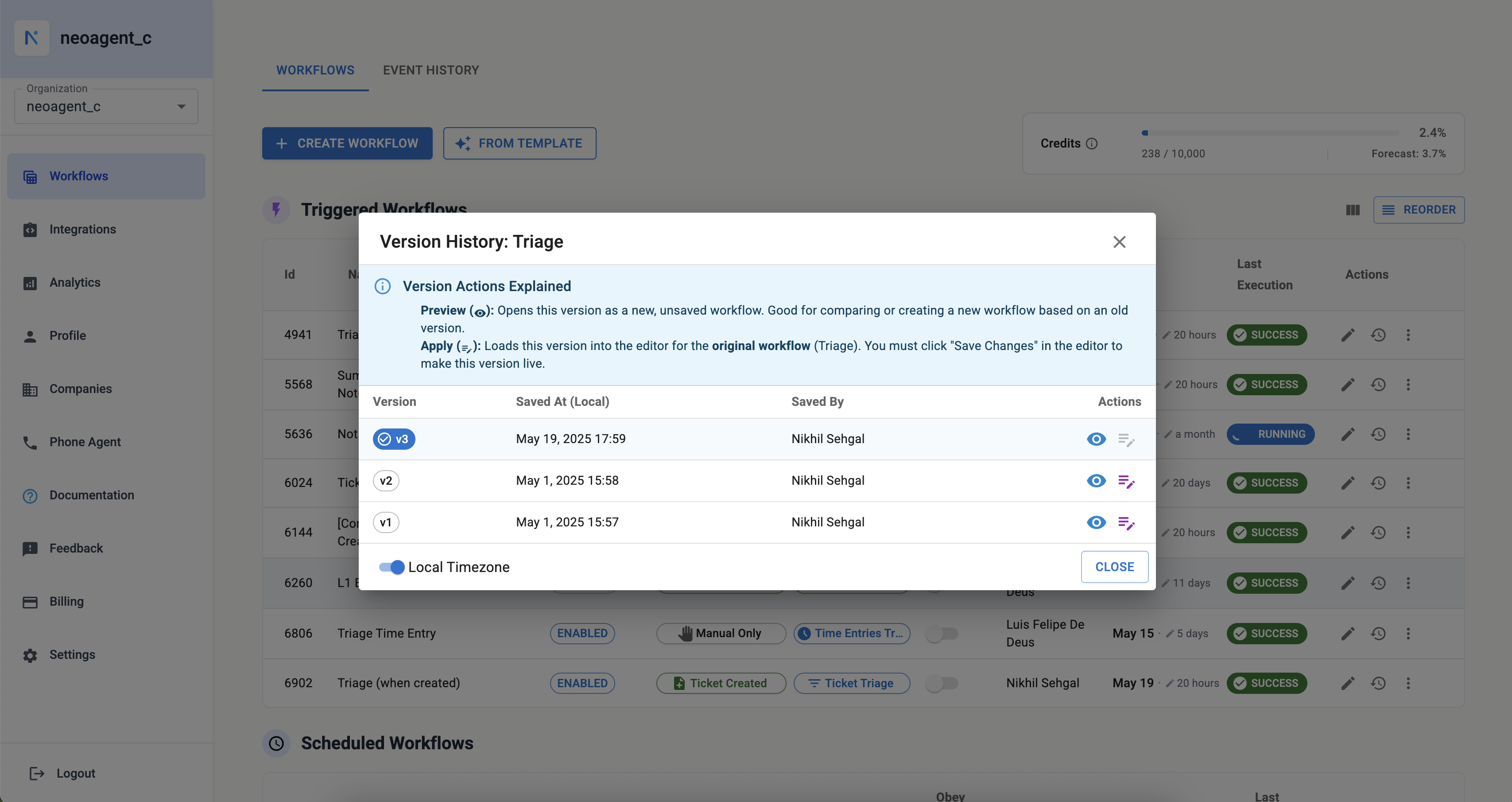Workflow Version History
Neo Agent automatically tracks changes to your workflows, providing a comprehensive version history. This feature is crucial for:
- Auditing changes for compliance and troubleshooting.
- Safely rolling back to a previous, stable version if an update causes unexpected behavior.
- Facilitating team collaboration by providing transparency on who changed what and when.
Accessing Version History
You can access the version history for any workflow directly from the main Workflows page:
- Navigate to the Workflows section in Neo Agent.
- Locate the workflow you want to inspect.
- Click on the three-dots menu ( kebab menu ) on the right side of the workflow row.
- Select "Version History" from the dropdown menu.

This will open a dialog displaying all saved versions of the workflow.
Understanding the Version History Dialog
The Version History dialog lists all versions of the selected workflow, with the most recent version at the top. For each version, you can see:
- Version: An identifier for the version (e.g., v8, v2, v1).
- Saved At (Local): The timestamp when this version was saved. The timezone displayed is your local timezone.
- Saved By: The user who made the changes and saved this version.
- Actions:
- Preview (eye icon): Opens this version of the workflow in a read-only mode. This is useful for comparing different versions or understanding the configuration of an older version without making it active.
- Apply (up arrow icon): Loads this version into the workflow editor. You must click "Save Changes" in the editor to make this version the current, live version of the workflow.

How Versioning Works
Neo Agent's versioning mechanism is designed to capture a snapshot of your workflow whenever it's modified.
- Automatic Version Creation: Every time a workflow is updated and saved, a new version is automatically logged in the
workflows_updates_logtable in the database. - Data Logged: Each entry in the log includes:
- The
workflow_idto link it to the specific workflow. - A complete snapshot of the workflow's configuration at that point in time, including its
name,state,trigger_type,schedule,actions, and other settings. - The
client_idandclient_namefor organizational context. - Information about the
created_by_user(who made the update). - The
version_timestamp, indicating precisely when this version was created.
- The
- Retrieval: When you open the "Version History" dialog, Neo Agent queries this log table, filtering by the current
workflow_id,environment, andclient_id, and orders the results byversion_timestampin descending order to show the newest versions first.
Key Benefits
- Audit Trail: Maintain a clear record of all modifications, essential for change management and compliance.
- Rollback Capability: If a new workflow configuration introduces issues, you can easily revert to a previously known good state by previewing an older version and then applying it.
- Experimentation: Feel more confident experimenting with workflow changes, knowing you can always go back.
- Collaboration: Understand the evolution of a workflow, especially when multiple team members are involved in its development and maintenance.
Regularly review version history, especially after making significant changes, to ensure automations are behaving as expected. If you encounter an issue, the version history is your first stop for diagnosis and potential rollback.